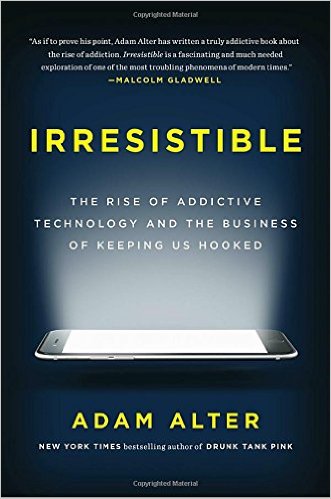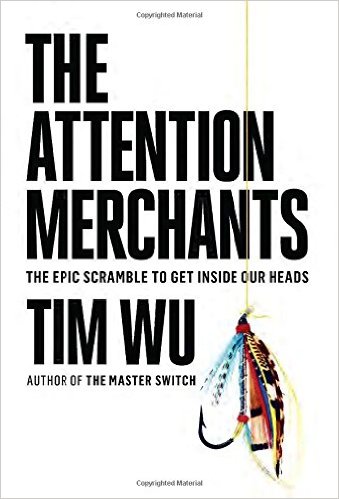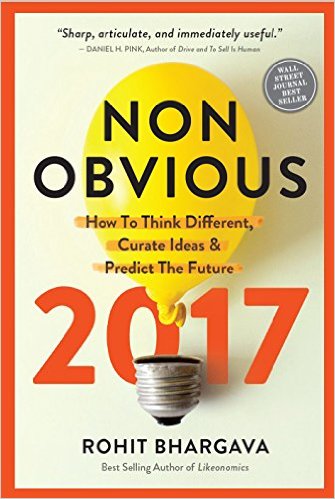In today’s hyperconnected environment, publishers and consumers alike are grappling with the implications of information overload and distraction. As publishers, how do we get—and keep—the attention of audiences as technology enables ever-greater media choices? And as consumers, how do we make sense of it all?
Offering a range of perspectives on the growing battle for our hearts and minds, this month’s recommended reading selections can help you break through the noise—as both a media creator and consumer.
Book Picks: Breaking Through the Noise of the Connected World
Irresistible: The Rise of Addictive Technology and the Business of Keeping Us Hooked by
Welcome to the age of behavioral addiction: We obsess over our emails, Instagram likes, and Facebook feeds; we binge on TV episodes and YouTube videos; we work longer hours each year; and we spend an average of three hours each day using our smartphones. In this revolutionary book, Adam Alter tracks the rise of behavioral addiction, and explains why so many of today’s products are irresistible. Though these miraculous products melt the miles that separate people across the globe, their extraordinary and sometimes damaging magnetism is no accident. The companies that design these products tweak them over time until they become almost impossible to resist. By reverse engineering behavioral addiction, the author explains how we can harness addictive products for the good—to improve how we communicate with each other, spend and save our money, and set boundaries between work and play—and how we can mitigate their most damaging effects on our well-being, and the health and happiness of our children.
The Attention Merchants: The Epic Scramble to Get Inside Our Heads by
Feeling attention challenged? Even assaulted? American business depends on it. In nearly every moment of our waking lives, we face a barrage of messaging, advertising enticements, branding, sponsored social media, and other efforts to harvest our attention, contributing to the distracted, unfocused tenor of our times. Tim Wu argues that this condition is not simply the byproduct of recent technological innovations but the result of more than a century’s growth and expansion in the industries that feed on human attention. From the pre-Madison Avenue birth of advertising to the explosion of the mobile web; from AOL and the invention of email to the attention monopolies of Google and Facebook; from Ed Sullivan to celebrity power brands like Oprah Winfrey, Kim Kardashian, and Donald Trump, the basic business model of “attention merchants” has never changed: free diversion in exchange for a moment of your consideration, sold in turn to the highest-bidding advertiser. As Wu describes, attention merchants are always growing new heads, even as their means of getting inside our heads are changing our very nature—cognitive, social, political, and otherwise—in ways unimaginable even a generation ago.
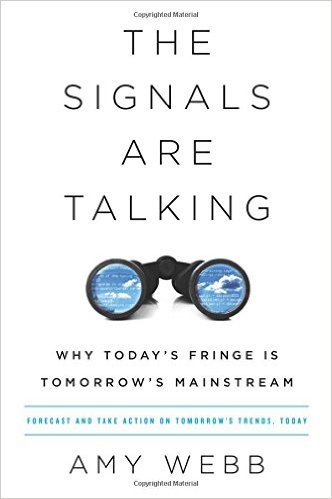 The Signals Are Talking: Why Today’s Fringe Is Tomorrow’s Mainstream by
The Signals Are Talking: Why Today’s Fringe Is Tomorrow’s Mainstream by
This book reveals a systemic way of evaluating new ideas bubbling up on the horizon, distinguishing what is a real trend from the merely trendy. It helps us hear which signals are talking sense, and which are simply nonsense, so that we might know today what developments—especially those seemingly random ideas at the fringe—have long-term consequence for tomorrow. With the methodology developed in The Signals Are Talking, we learn how to think like a futurist and answer vitally important questions: How will technologies like artificial intelligence, machine learning, self-driving cars, biohacking, bots, and the Internet of Things affect us personally? How will it impact our businesses and workplaces? How will it eventually change the way we live, work, play, and think—and how should we prepare for it now? Most important, the author persuasively shows that the future isn’t something that happens to us passively. Instead, she allows us to see ahead so that we may forecast what’s to come—challenging us to create our own preferred futures.
Non-Obvious 2017 Edition: How to Think Different, Curate Ideas & Predict the Future by
The winner of the 2017 Axiom Business Silver Medal in Business Theory, the 2017 edition of this Wall Street Journal bestseller features 15 new trends and updated ratings of over 60 previously predicted trends. For the past 7 years, marketing expert and Georgetown University professor Rohit Bhargava has curated his best-selling list of non-obvious trends by asking the questions that most trend predictors miss. It’s why his insights on future trends and the art of curating trends have been utilized by dozens of the biggest brands and organizations in the world, like Intel, Under Armour, and World Bank. In this all-new seventh edition, discover what more than a million readers already have: how to use the power of non-obvious thinking to grow your business and make a bigger impact in the world.
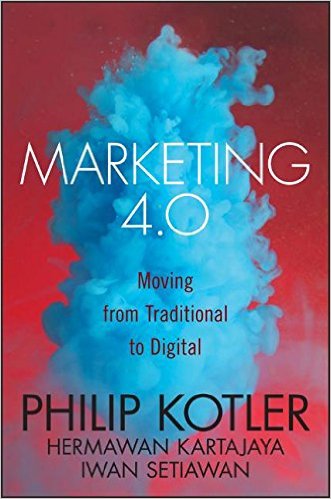 Marketing 4.0: Moving from Traditional to Digital by
Marketing 4.0: Moving from Traditional to Digital by
This much-needed handbook for next-generation marketing is written by the world’s leading marketing authorities to help you navigate the increasingly connected world and changing consumer landscape to reach more customers, more effectively. Today’s customers have less time and attention to devote to your brand—and they are surrounded by alternatives every step of the way. You need to stand up, get their attention, and deliver the message they want to hear. This book examines the marketplace’s shifting power dynamics, the paradoxes wrought by connectivity, and the increasing sub-culture splintering that will shape tomorrow’s consumer. This foundation shows why Marketing 4.0 is becoming imperative for productivity, and this book shows you how to apply it to your brand today. It takes advantage of the shifting consumer mood to reach more customers and engage them more fully than ever before. Exploit the changes that are tripping up traditional approaches, and make them an integral part of your methodology.
If you’d like to share something you’ve read, drop us a note. Also check out the Technology for Publishing blog, and keep up with the latest industry news coverage by signing up for our This Week in Publishing emails and monthly Publishing Innovations newsletter.
Posted by: Margot Knorr Mancini


